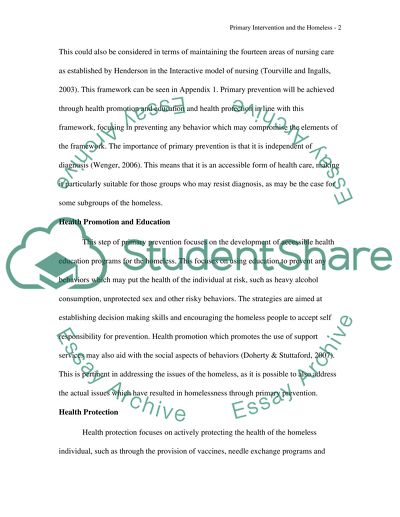Cite this document
(Primary Intervention and the Homeless Term Paper, n.d.)
Primary Intervention and the Homeless Term Paper. Retrieved from https://studentshare.org/health-sciences-medicine/1542877-levels-of-prevention-paper-primary-health-prevention-levels-by-community-health-nurses
Primary Intervention and the Homeless Term Paper. Retrieved from https://studentshare.org/health-sciences-medicine/1542877-levels-of-prevention-paper-primary-health-prevention-levels-by-community-health-nurses
(Primary Intervention and the Homeless Term Paper)
Primary Intervention and the Homeless Term Paper. https://studentshare.org/health-sciences-medicine/1542877-levels-of-prevention-paper-primary-health-prevention-levels-by-community-health-nurses.
Primary Intervention and the Homeless Term Paper. https://studentshare.org/health-sciences-medicine/1542877-levels-of-prevention-paper-primary-health-prevention-levels-by-community-health-nurses.
“Primary Intervention and the Homeless Term Paper”, n.d. https://studentshare.org/health-sciences-medicine/1542877-levels-of-prevention-paper-primary-health-prevention-levels-by-community-health-nurses.


